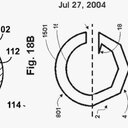Allele-specific marker development and selection efficiencies for both flavonoid 3'-hydroxylase and flavonoid 3',5'-hydroxylase genes in soybean subgenus soja.
Sleutelwoorden
Abstract
Color is one of the phenotypic markers mostly used to study soybean (Glycine max L. Merr.) genetic, molecular and biochemical processes. Two P450-dependent mono-oxygenases, flavonoid 3'-hydroxylase (F3'H; EC1.14.3.21) and flavonoid 3',5'-hydroxylase (F3'5'H, EC1.14.13.88), both catalyzing the hydroxylation of the B-ring in flavonoids, play an important role in coloration. Previous studies showed that the T locus was a gene encoding F3'H and the W1 locus co-segregated with a gene encoding F3'5'H in soybean. These two genetic loci have identified to control seed coat, flower and pubescence colors. However, the allelic distributions of both F3'H and F3'5'H genes in soybean were unknown. In this study, three novel alleles were identified (two of four alleles for GmF3'H and one of three alleles for GmF3'5'H). A set of gene-tagged markers was developed and verified based on the sequence diversity of all seven alleles. Furthermore, the markers were used to analyze soybean accessions including 170 cultivated soybeans (G. max) from a mini core collection and 102 wild soybeans (G. soja). For both F3'H and F3'5'H, the marker selection efficiencies for pubescence color and flower color were determined. The results showed that one GmF3'H allele explained 92.2 % of the variation in tawny and two gmf3'h alleles explained 63.8 % of the variation in gray pubescence colors. In addition, two GmF3'5'H alleles and one gmF3'5'h allele explained 94.0 % of the variation in purple and 75.3 % in white flowers, respectively. By the combination of the two loci, seed coat color was determined. In total, 90.9 % of accessions possessing both the gmf3'h-b and gmf3'5'h alleles had yellow seed coats. Therefore, seed coat colors are controlled by more than two loci.


